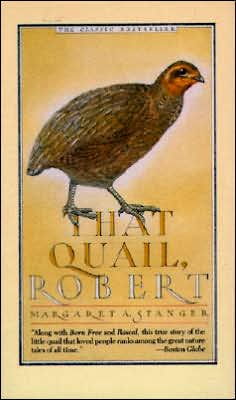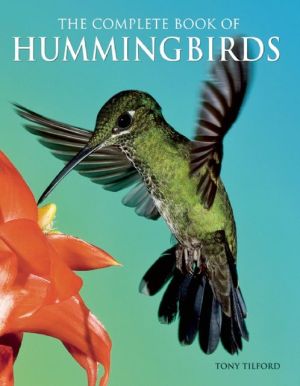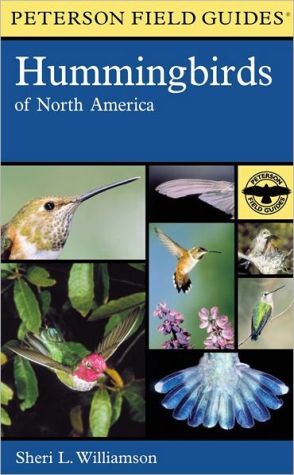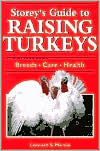Grail Bird: The Rediscovery of the Ivory-billed Woodpecker
In April 2005, a startling announcement made national and international news: the ivory-billed woodpecker, a bird thought to be extinct for nearly sixty years, had been sighted. The story behind this incredible discovery began more than a year earlier when, after a lengthy search, Tim Gallagher was one of the first people to see this iconic bird, the holy grail of birdwatchers. He persuaded the Cornell Laboratory of Ornithology to mount a massive search for evidence of the bird's existence....
Search in google:
In April 2005, a startling announcement made national and international news: the ivory-billed woodpecker, a bird thought to be extinct for nearly sixty years, had been sighted. The story behind this incredible discovery began more than a year earlier when, after a lengthy search, Tim Gallagher was one of the first people to see this iconic bird, the holy grail of birdwatchers. He persuaded the Cornell Laboratory of Ornithology to mount a massive search for evidence of the bird's existence. The news was kept secret while field teams went to work and land was bought to conserve the ivory-bill's habitat. Gallagher's story reads like a mystery novel, and the subsequent conservation efforts provide hope and a lesson for our times. Library Journal In April 2005, a dramatic press conference announced the rediscovery of the ivory-billed woodpecker, a species presumed extinct for 60 years. Gallagher, a Cornell ornithologist and editor who launched a new hunt for the bird after coming across an Internet lead, tells the story of the search for the bird in eastern Arkansas. He vividly describes the vast swamps of the Southeast, the characters involved in the search, and their adventures and misadventures. Gallagher also relates the history of the ivory-billed woodpecker from Colonial times, its tenuous existence in eastern Cuba, and the demise of a closely related species in the mountains of Mexico. Kept secret for over a year, the rediscovery of this striking, huge woodpecker was the result of an almost accidental event, followed by intensive, exhaustive fieldwork, which continues. Scholarship, exploration, and the use of high-technology recording and photographic equipment all play an important role. An engaging story of the triumph of conservation, this book is highly recommended for most collections. To tap into the public interest, librarians might want to display it with two other fine titles on this subject: woodpecker authority Jerome Jackson's In Search of the Ivory-Billed Woodpecker and Phillip Hoose's The Race to Save the Lord God Bird. [Scheduled for a May 18 publication, Gallagher's book was embargoed until news of the bird's rediscovery could be released to the public.-Ed.]-Henry T. Armistead, Free Lib. of Philadelphia Copyright 2005 Reed Business Information.
<<P>10 A BAYOU WITH A VIEW \ You never know when you get up in the morning what earth-shaking event might take place and change your life forever. For me, a chain of such events began when I checked my e-mail one day in February 2004. Just a few days earlier, a kayaker named Gene Sparling-the same man Larry Mallard had told me about a few weeks earlier-had spotted an unusual woodpecker foraging on a huge cypress tree in a long, narrow bayou in eastern Arkansas. When he saw the bird’s unique color pattern-brilliant white on the lower half of its back, with two white lines extending up the back to its crested head- he knew immediately that he had never seen this kind of bird before. Inconspicuous in his kayak, he pulled into a secluded spot and sat watching it for almost a full minute. The woodpecker was so close he could see the minute details of the feathers and even some greenish staining on the lower part of its back, perhaps from going in and out of a roost hole or nest. \ When he got home a few days later, Gene posted a long description of his trip on a canoe club listserver, and he included a couple of sentences about the woodpecker, buried toward the end of the piece. His e-mail report was forwarded to me, and I immediately called him up. I grilled him for about an hour. His sighting sounded better than a lot of the thirty-year-old reports I had been investigating, and it was less than a week old. \ Gene has pileated woodpeckers nesting on his farm in Hot Springs, in the western part of Arkansas, so he is thoroughly familiar with that species. It seemed unlikely that a pileated was what he had seen. What struck me most about his description was that he said the bird seemed almost cartoonlike because of its quick, jerky movements and general nervousness. Its neck looked thinner than a pileated’s, and its crest seemed to come to a point in the back. \ I telephoned Bobby and told him about the sighting. Then I asked if he would mind calling Gene and talking to him. I was interested in getting his impression, to see if it was the same as mine. \ After a long talk with Gene, Bobby told him, "It sounds to me like you’ve seen an ivory-billed woodpecker." \ "You think so?" said Gene. "I don’t have enough confidence to make that call, but I’m glad to hear you say that." \ Before they got off the phone, Bobby was already planning a trip to the sighting area, at Bayou de View in the Cache River National Wildlife Refuge, and Gene was going to go with him. I mentioned this to my wife about an hour later, and she told me, "You should go along with him. You’ll never forgive yourself if he sees an ivory-bill and you’re not there." \ I didn’t need much encouragement. I did a quick search on the Internet to find a good airline ticket price and then called up Bobby. "Say, you think you could pick me up in Memphis on the way down?" \ "No problem," he said. "I go right through there." \ And that was it: the start of our adventure. A week later I was on my way south again, for the second time in a month. \ Gene Sparling told us to meet him on a small country road near Clarendon, Arkansas. He wanted to look at a place where we could haul out at the end of our several-day-long float down the bayou. He had arranged with a local man called Frank to drop us off at a bridge crossing several miles north of where Gene had seen the strange woodpecker and to pick us up at the haul- out point.\ We spotted Gene’s red Toyota pickup, unmistakable with the canoe and kayak strapped to the top, a few minutes after turning off the main road. Gene greeted us enthusiastically, and we stood on the side of the road discussing the bird he had seen and our plans for the next few days.\ Gene is an affable man with a deep, resonant voice and a slow delivery that reminds me a little of Eeyore’s. Grizzled and bearded, with receding red hair and crow’s feet etched deeply into his weathered face, he looks older than his forty-eight years. When we finished talking, Gene told us to follow him into Clarendon to pick up Frank.\ As we drove along behind him, I said to Bobby, "You know, he either saw an ivory-bill or he’s lying. And I really don’t think he’s a liar."\ Bobby nodded. "I don’t either," he said. "His story is completely believable."\ Gene got confused on the way to Frank’s house, and we went driving around and around in a residential area where everything looked the same. He finally found the correct house. Gene leaves his car at Frank’s house every time he goes kayaking in this area. On this trip, Bobby parked his old van in front of Frank’s house and left him with the keys.\ Frank is a large, jovial man of about sixty-five who wears cowboy boots and a leather belt with a huge silver buckle. He teased Gene mercilessly as he drove us to our drop-off point, claiming that Gene must have a she-bear stashed somewhere in the bayou that he was always visiting. "No one would come out here just to look at a damn bird," he said. "I know you got a she-bear."\ It was bad when Bobby and I first started canoeing along Bayou de View- real bad. Without any preparation, we clambered down below the overpass, loaded up the canoe-which Gene had borrowed from his parents-and pushed off into the latte-brown river flowing into the swamp. I sat in front and Bobby in the stern, with all our equipment piled high between us. I had had some fairly recent experience canoeing in the Adirondacks with my kids, and I had floated to falcon nests in Canada and other far northern places in the past, but I was rusty. Bobby hadn’t touched a canoe since he was twelve, and it showed. It was a real grind hauling ourselves through that morass, at times practically clawing our way through the bayou, scrambling up and over logs and cypress knees and blasting through little chutes where the water pushed together to form a swift-moving stream. This is where you’re in danger of flipping over. You bump into a submerged log or root, then overreact to compensate, and there you go-your canoe has turned over and all your gear and supplies are bobbing downstream as you lie submerged, with brown swamp water rushing into your mouth. Blech!\ On that first day, it seemed that whenever we found ourselves rushing into a treacherous area, Bobby and I couldn’t coordinate our movements to avoid the hazards. I would point the canoe toward the one open passage I could see ahead, but Bobby would inevitably steer in the other direction, and we would wind up blasting sideways into the teeth of disaster. It was the wildest roller coaster ride I’ve ever been on. Somehow we managed not to swamp the canoe, but a couple of times I had to jump overboard and horse the canoe in a different direction. Luckily, I was wearing chest waders. Unluckily, the water was sometimes deeper than the top of my waders and came flooding inside.\ Bayou de View is a magical place where wildlife abounds. As we canoed through the swamp, wood ducks and flocks of mallards burst from the water around us. Herds of white-tailed deer, snorting a loud warning, splashed off across the shallow water at the edge of the woods. We saw beavers swimming past and otters playing. The loud calls of barred owls and great horned owls echoed through the dim recesses of the swamp, even at mid- day. But most impressive were the woodpeckers. Everywhere we turned, we saw pileated, red-bellied, red-headed, and downy woodpeckers, plus a few yellow-bellied sapsuckers. It excited us to remember that Jim Tanner had written that the woods in the Singer Tract had the most woodpeckers he had ever seen. This bayou had the same feel. Although on the first day we didn’t see any of the huge trees that Gene had described, we passed some massive stumps, remnants of the logging done in the 1800s. And it seemed that there were trees in every state of decomposition, ranging from those that had just a few dying limbs to those that had tumbled to the swamp floor and were rotting away to nothing. It was perfect for woodpeckers, with lots of food and dead trunks and limbs in which to forage and dig roost and nest holes.\ The three of us found a nice place to camp on some high ground near an area of open water. As I was pitching the tent, though, it began to dawn on me that I would not spend a pleasant night here. I had left home so quickly that I had forgotten to bring my good tent, down sleeping bag, and camp pad. They were packed in a bag back home.\ I had said to Bobby when we met in Memphis that we should stop at a sporting goods store so I could buy the equipment I would need before we hit the swamp.\ "Don’t worry," he told me. "I’ve got an extra tent and sleeping bag in my van."\ "You sure?" I asked. "It’d be no problem to stop and buy some more equipment."\ "No, no," he told me. "I’ve got everything."\ I wish I had gone with my instincts. As it turned out, the tent wasn’t quite waterproof or bugproof and the sleeping bag had a broken zipper. And it was much colder than I had thought it would be. After sleeping fitfully for a couple of hours, I woke with a start at the nearby splash of a beaver pounding its tail flat on the water right next to us, and I never got back to sleep. No matter what I did with that sleeping bag, the cold air just flooded in, and it was too difficult to get more clothes from my bags in the middle of the night. They were packed securely in the canoe, and I couldn’t even find my flashlight. The darkness of that swamp in the middle of the night was like nothing I had ever experienced. I couldn’t even see my finger an inch from my eye. So I hunkered in the fetal position and shivered all night.\ Still, it was great getting up the next morning. Bobby made his classic swamp breakfast, Dinty Moore stew in special waterproof packages for boiling. He put three or four of them at a time into a bubbling cauldron of brown swamp water completely unfit for human consumption, reasoning that the water couldn’t get through the pouches to the food. Of course, we would never know if it did, because the stew was about the same color as the water. Gene said that the last time he was here, he had run short of drinking water and had pulled out his special survival water purification straw, but it had clogged up after a few quick sips. He didn’t say what the water tasted like-it was probably a bit like Dinty Moore stew.\ On the second day of our trip, we passed an area where a long-abandoned railroad trestle, built shortly after the Civil War, cut through the trees. The rails and even the rail bed were long gone, and only stout wooden posts rose up from the swamp water. We were starting to feel as if we were really out in the wilderness, far from civilization. We had been grinding along all morning, and it was tough. Bobby and I tried our best to keep up with Gene, but his kayak was much lighter and more maneuverable than our canoe. He could slip easily through places that presented impossible barriers to us: cypress knees, log jams, tangles of brush and debris. We often had to back up a long way and try a different route, fighting the current back upstream and weaving around obstacles.\ It was an amazing experience spending time with Gene. He is a remarkable outdoorsman and has spent his life doing things like this-hiking, backpacking, horse packing, or kayaking for days or weeks at a time, in areas as close to wilderness as he can find. He used to lead kayak tours in Baja California, paddling out among the gray whales. He now owns a big farm in the mountains near Hot Springs and leads horseback-riding tours.\ Gene was at his best threading his way stealthily through the bayou in his kayak. He would always range a hundred feet or more in front of us, pulling into little hiding places and sitting silently- watching, waiting for something to happen. His patience was boundless, and he had such a low profile in the kayak, he didn’t look human. If anything, animals seemed curious when they saw him. We would come along behind him in our canoe and watch wood ducks, beavers, and otters flush from just a few yards in front of him. I had a feeling he would much rather have been out there alone, but he wanted someone to confirm his ivorybill sighting so much that he put up with us.\ Just as we were thinking what a wild place Bayou de View was, we started to hear the loud roar of highway traffic less than a mile downstream. As we approached the bridge at Highway 17, the din from semis was almost unbearable. Bobby told me that whenever he looked down on canoeists while he was driving past on a highway, he always envied them, wishing he could be down there instead of driving. And now here he was, one of the lucky canoe people. The only problem was that it was now a good hour past noon, and he hadn’t eaten so much as a Snickers bar since breakfast. "Man, we gotta stop soon," he said. "I’m starving to death."\ Looking around, I couldn’t see any dry spots. The woods up and down the bayou in this area were inundated. Gene said he remembered some places downstream, a little past the highway, where we could stop for lunch. I said that was fine with me. Bobby didn’t seem too happy, but we continued on.\ We paddled the length of the "lake" south of 17 (it was more like what we would call a pond in New York) and turned right into a narrow channel leading through the trees. Gene had gone well ahead of us and was going to wait for us when he found a good place to stop for lunch. If it seemed that we had gotten lost, he would come looking for us.\ As we paddled along, we talked and joked about floating through the trackless swamp. Then Bobby started to grouse that we were being way too noisy to see any ivory-bills.\ "We don’t need to worry about that," I said. "The road’s so loud, they’ll never hear us coming. And who knows, maybe Gene will chase one back to us."\ And then it happened. Less than eighty feet away, a large black- and-white bird that had been flying toward us from a side channel of the bayou to the right came out into the sunshine and flew across the open stretch of water directly in front of us. It started to bank, giving us a superb view of its back and both wings for a moment as it pulled up, as if it were going to land on a tree trunk. "Look at all the white on its wings!" I yelled. Hearing my voice, it veered away from the tree and continued to fly to the left. We both cried out simultaneously, "Ivory-bill!"\ Bobby reached for his camcorder while I tried to keep track of the bird. I kept pointing as it flew. I’m sure it landed on a tree trunk about fifty feet away, because I lost it for about three seconds, then I had it again, moving in a straight line through the woods, going up the bayou for another fifty or sixty feet, then landing again. It must have hitched around the trunk each time, because I couldn’t see it. When we were almost to shore, I caught another glimpse of it flying at the same altitude in the middle of the woods. I lost it after about ten feet.\ We clambered ashore, dragged the canoe onto the mud, and took off after the ivory-bill, our camcorders running. We staggered through boot- sucking mud and mire, over fallen trees, and through tangled brush and briars. It was impossible to move quietly. We didn’t see the bird.\ About fifteen minutes later we walked back to the canoe, just as Gene was paddling to shore, looking for us. I glanced at my watch. It was 1:30 on February 27, 2004. I said to Bobby that we should sit down separately right away and jot down our field notes, before we had a chance to talk about what we had seen and influence each other. At least we would have some kind of documentary evidence, even if we couldn’t get a photograph. (Later, when I was back in Ithaca, Bobby faxed me his field notes and a sketch he had drawn right after seeing the bird; it was virtually identical to my sketch.)\ My first impression of the bird was that it was definitely a woodpecker and looked larger than a crow. I know that it had white on the trailing edge of the wing, because that’s what I honed in on and was looking for when I mentally evaluated it. The white was much whiter than I thought it would be, and the black much blacker-coal black, beautiful. I didn’t notice any red on the bird, and I did not have a distinct impression of the bill, because I had focused at first on the wing pattern and then on keeping track of the bird. No knowledgeable person could have misidentified it. It was definitely not a pileated woodpecker. It looked completely different to me. And we had been seeing dozens of pileateds and pointing them out right and left, commenting on their field marks and other characteristics, constantly asking ourselves whether we could possibly mistake them for an ivory-bill. No way. The bird we saw was a different animal.\ I’m glad that both Bobby and I saw the ivory-bill together. He has always been the most skeptical person about ivory-bill sightings I know. Although he did not believe that these birds were extinct, he rarely gave much credence to the reports that came in from time to time.\ About half an hour after the sighting, he called Norma on his cell phone. She suffered from diabetes and asthma, and the medicines she took for both conditions often worked against each other and made her sicker. He was always concerned about her and usually called her whenever he got to an area with decent cell-phone reception. This time, he engaged in small talk for about ten minutes, asking how she was doing, how her latest tests at the hospital had gone. Then he stopped abruptly and let out a deep sigh. "I saw an ivory-bill," he said, and then he broke down and sobbed. "I saw an ivory- bill." Gene and I looked away, and it was all we could do to keep from crying ourselves. I saved my tears for a few days later, as I was driving home from Rochester airport in the dark.\ Gene was ready to leave the bayou right away and start telling people about the sighting. He thought that people at the local office of the Nature Conservancy should know, and the officials at the Cache River and White River National Wildlife Refuges. "If we tell these people about the bird, they’ll be able to save this whole bayou," he said.\ "We can’t do it," I told him. "You have no idea what could happen here. I mean, how would you like it if a couple of thousand birders showed up next week to look for the bird? We have to do this right, Gene. And besides, we’ve got nothing right now-no proof that the bird really exists."\ "What do you mean?" he said. "You both saw it-you said it couldn’t have been anything else."\ "Yeah, but who the hell are we?" I said.\ "You’re the experts, right? You’re from Cornell. That’s why I brought you here."\ "Look, Gene, I’m a bird magazine editor, and Bobby teaches art and photography. We’re not scientists, and even if we were, we would still need solid proof."\ Gene was fuming. "We have three eyewitnesses who saw this bird. Three! What more do we need?"\ "We need a picture or a video. Believe me, even if the director of the Lab of Ornithology had been in the canoe with us, he would say the same thing. We’ve got nothing. But we still have a few more days to spend out here. Let’s set up camp somewhere close and start searching. This is the second sighting of the bird in this area in two weeks. We really ought to be able to nail it on film."\ We agreed to keep things cool for a couple of days. We could always revisit this conversation in a few days if we couldn’t find the bird. We floated downstream about a quarter of a mile and pulled out on a nice piece of higher ground on the east side of the bayou. A massive cypress tree, well over a thousand years old, towered high above us nearby, surrounded by tupelos, and second- growth oaks and other bottomland hardwoods grew above the waterline. It seemed to be an excellent place for an ivory-bill. Who could say? Maybe we would wake up the next morning and find a nest right outside of camp. We put up our tents and dubbed the place Camp Ephilus II, in honor of the camp Arthur Allen set up within sight of an active ivory-bill nest in the Singer Tract in 1935.\ At dusk we fought our way back upstream to the place we had seen the bird. Another great old cypress, perhaps seven feet in diameter, stood not far from where the ivory-bill had been. We could see at least one excellent woodpecker hole. Could it possibly be an ivory-billed woodpecker’s roost hole? Or maybe it was a nest. Anything seemed possible and perhaps even probable to us that day. We sat silently tucked away at the side of the bayou, waiting for a bird to fly into the hole or make a kent call or a double rap. In the quiet of the swamp, with its thick, damp air, we watched and waited for over an hour. Nothing showed up. When it was too dark to see, we headed back to camp, shining our tiny flashlight beams into the abyss of darkness ahead. Gene had hung little strips of white toilet paper on branches to mark the way, and we followed them in the darkness like Hansel and Gretel.
Preface xiii 1. Of People and Peckerwoods 1 2. Me and Bobby Ray 28 3. Jim and Nancy 37 4. Mary, Mary 54 5. White River Revisited 66 6. A Paradise on Earth 85 7. The Boxer 100 8. The LSU Connection 115 9. The Land of Dead Giants 134 10. A Bayou with a View 145 11. The Third Degree 161 12. Back to the Bayou 168 13. Where Sapsuckers Dare 188 14. Trying to Prove the Existence of a Ghost 205 15. Swamp Rats 219 16. The Lazarus Bird 235 Epilogue 241 Acknowledgments and Sources 251 Index 259
\ Library JournalIn April 2005, a dramatic press conference announced the rediscovery of the ivory-billed woodpecker, a species presumed extinct for 60 years. Gallagher, a Cornell ornithologist and editor who launched a new hunt for the bird after coming across an Internet lead, tells the story of the search for the bird in eastern Arkansas. He vividly describes the vast swamps of the Southeast, the characters involved in the search, and their adventures and misadventures. Gallagher also relates the history of the ivory-billed woodpecker from Colonial times, its tenuous existence in eastern Cuba, and the demise of a closely related species in the mountains of Mexico. Kept secret for over a year, the rediscovery of this striking, huge woodpecker was the result of an almost accidental event, followed by intensive, exhaustive fieldwork, which continues. Scholarship, exploration, and the use of high-technology recording and photographic equipment all play an important role. An engaging story of the triumph of conservation, this book is highly recommended for most collections. To tap into the public interest, librarians might want to display it with two other fine titles on this subject: woodpecker authority Jerome Jackson's In Search of the Ivory-Billed Woodpecker and Phillip Hoose's The Race to Save the Lord God Bird. [Scheduled for a May 18 publication, Gallagher's book was embargoed until news of the bird's rediscovery could be released to the public.-Ed.]-Henry T. Armistead, Free Lib. of Philadelphia Copyright 2005 Reed Business Information.\ \








